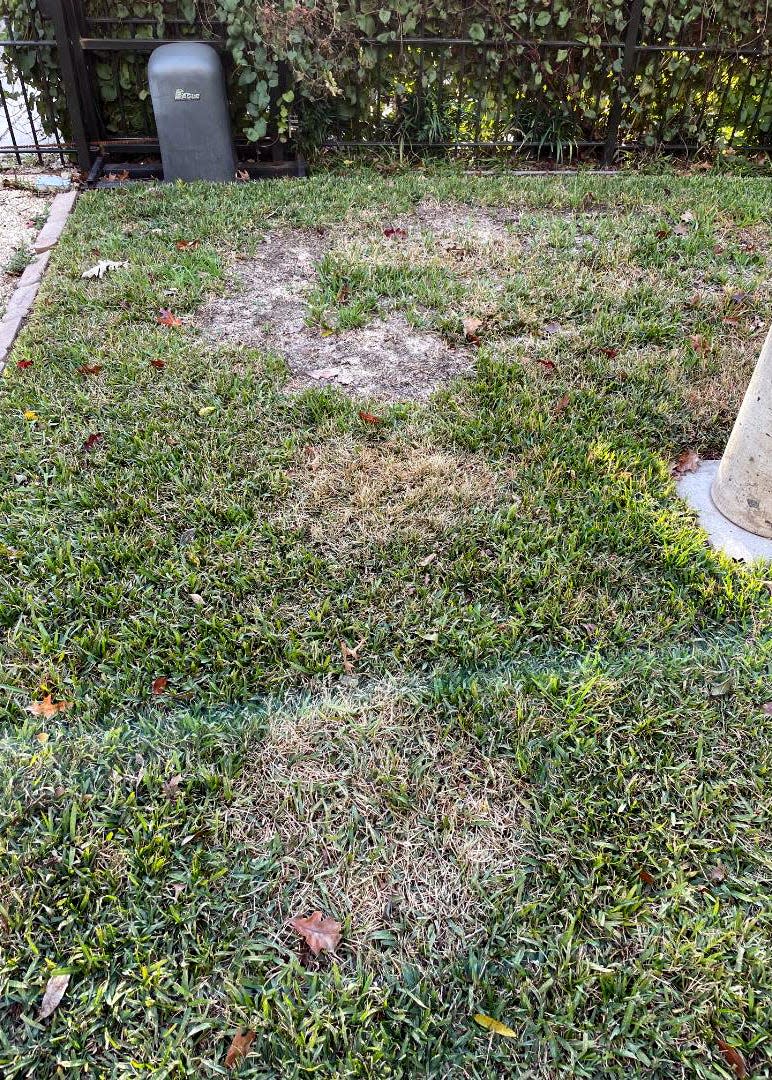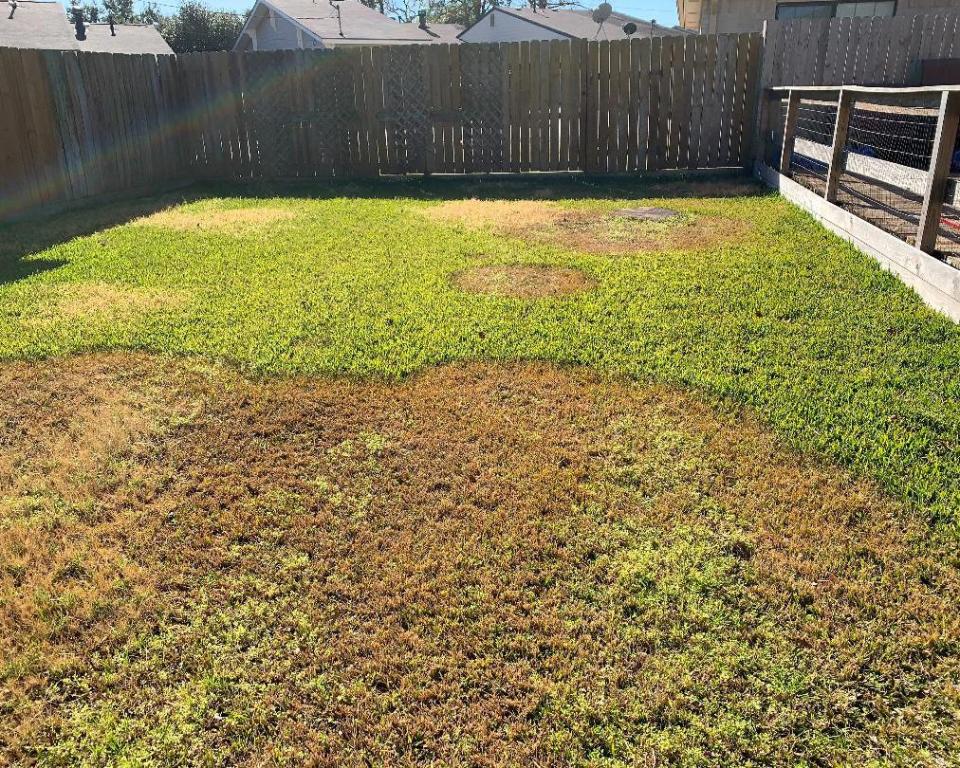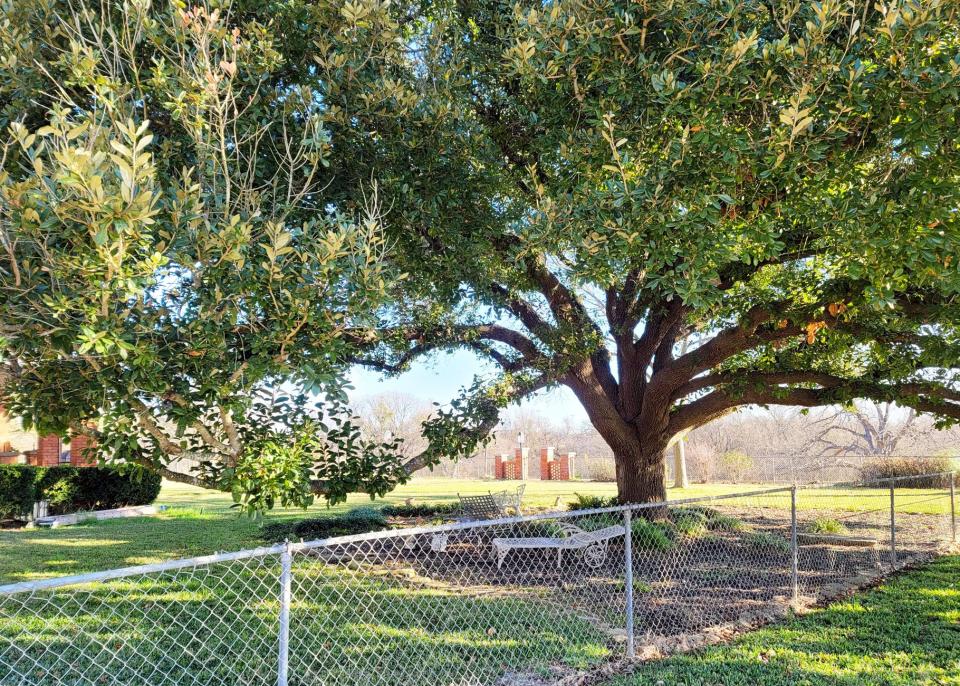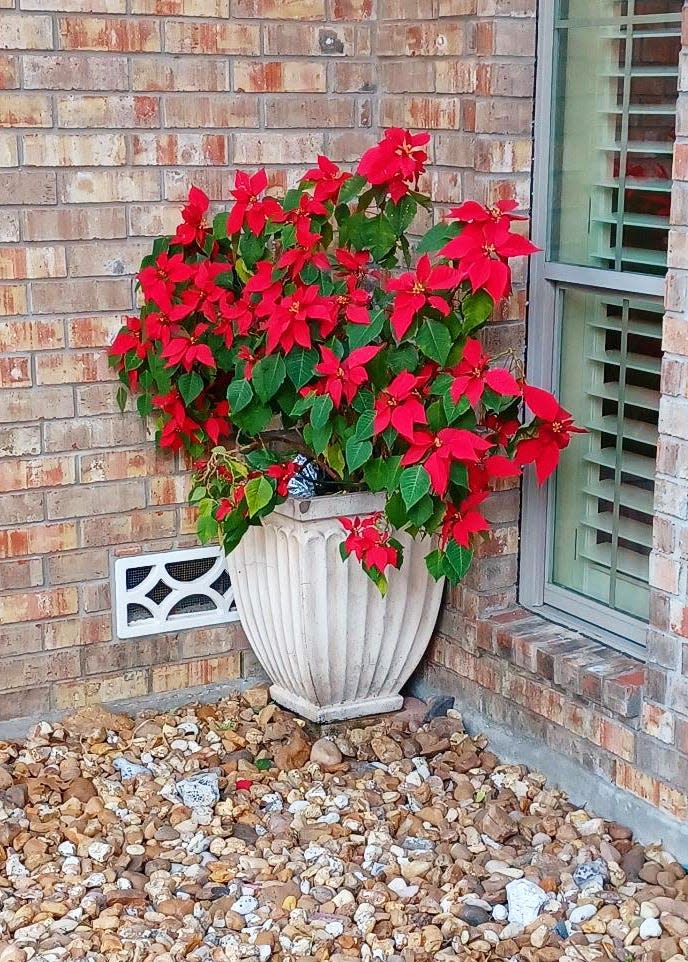Gardener's mailbag: Can I treat my St. Augustine while it is dormant?
Dear Neil: I have attached a photo from my St. Augustine lawn from last year. I assume I have either a fungus or an armyworm problem. Can I treat the grass while it is dormant now?

And, this question from another reader:
Dear Neil: We had these patches in our St. Augustine a couple of months ago. I did not get the photograph sent to you back then. Is there anything we should be doing now?
To my first reader, armyworms do not bother St. Augustine. It’s possible that this was chinch bug damage from last summer, but I’d rather imagine that it is brown patch fungus (also called “large patch”) from the fall. You and the second reader probably had brown patch outbreaks once the weather turned cooler. Brown patch attacks only the blades of the grass. It causes them to decay and pull loose easily from the runners. You can use the fungicide Azoxystrobin to control it when it is active, but there is no product to use at this time.

Dear Neil: Years ago I bought liriope to border for shrub bed. Unfortunately, I ended up with a spreading type instead of a clumping form. I’ve been able to stop it from spreading into the bed, but now it is spreading outward into my St. Augustine. When I try to pull it out, I pull up runners of the St. Augustine with it. Is there a way to remove it from my lawn?
All types of liriope do eventually spread, some just more rapidly than others. I have had very good luck in the same situation by using the green metal edging that you can buy in nurseries and hardware stores. I actually make an outer boundary and an inner boundary with the edging. I drive it into the ground almost flush with the soil surface. My liriope and its sister, monkeygrass, rarely sneak past it. I have actually used the edging to keep those two groundcovers separated from one another. You might try applying a broadleafed weedkiller (containing 2,4D) to the liriope in your turf area, but you’ll need to do so with a foam rubber paintbrush to avoid drift getting where you don’t want the herbicide.
Dear Neil: Post big freeze of last February, we have had lots of sucker type growth on our huge live oak’s limbs. Is it time to cut this off? Any suggestions of how we might have this done?

Assuming the old branches are not dying back and in need of being replaced, yes, you could remove much of this twiggy internal growth. I would probably want a certified arborist on site to determine how much thinning was necessary. He or she could also monitor any kind of freeze damage done to the tree. Sometimes the sprouts become important to new limb development, and the arborist would be able to determine that. As small as the sprouts are now, a machete might be useful. Or a small chain saw. It’s probably work best left to a pro. Remember, too, that pruning work on oaks is best done before mid-February to lessen the chance of spread of oak wilt.
Dear Neil: I have a small persimmon tree that needs to be transplanted. Can that be done now in winter?
Trees and shrubs that need to be dug and relocated should be moved while they are completely dormant. Yes, winter is the ideal time. Try to carry a ball of soil intact with its root system as you move it.
Dear Neil: I love zucchini and use it in many different recipes, but since I moved to Texas I’ve been unable to grow it. I always thought it was the easiest of all vegetables. I get all male flowers, so obviously I never get any fruit. And then something eats the leaves down to the stalks. What can I do?
Many insects could be eating the leaves, whether grasshoppers or some type of caterpillars. The fact that you’re only getting male flowers is far more puzzling. To bring everyone up to speed, squash and other cucurbits produce male and female flowers separately. Male flowers have conspicuous pollen, while the female flowers have swollen bases where the fruit will form. Male flowers are produced for the first week or two, probably as nature’s way of guaranteeing that pollen will be available when the plant is mature enough to produce female blooms and, therefore, fruit. I wonder if there is any chance that you gave up on the plants too soon – before the female flowers might have kicked in. Or if the leaves were devoured too early in the game. Sevin dust probably would help with the chewing pests. I’m afraid that’s the best I can come up with with the facts that I have.
Dear Neil: I thought you might like to see that your advice does pay off. This is a poinsettia that we bought in November 2020, enjoyed that winter, and then nurtured into rebloom this past Christmas 2021 as per your instructions posted here. Thanks for the guidance. It really worked!

To reader Bob C.: Well done! And to everyone else, you want to enjoy your poinsettia as long as it stays healthy, but when the bracts begin to fade away, repot it into a large container and trim off the spent flowers and bracts. Put it in a bright, warm spot (no freezing temperatures) where you can shelter it from the hot summer sun after mid-morning each day from late spring through the summer. Pinch out its growing tips to force it to produce branches. Keep it watered and well nourished. Starting October 1, provide it total darkness each evening from 5 p.m. until 8 a.m. That will trigger the flowering process as it “thinks” the nights are getting quite long. It must have sunlight the remaining daytime hours.
Have a question you’d like Neil to consider? Mail it to him in care of this newspaper or e-mail him at mailbag@sperrygardens.com. Neil regrets that he cannot reply to questions individually.
This article originally appeared on Herald Democrat: Gardener's mailbag: Can I treat my St. Augustine while it is dormant?

